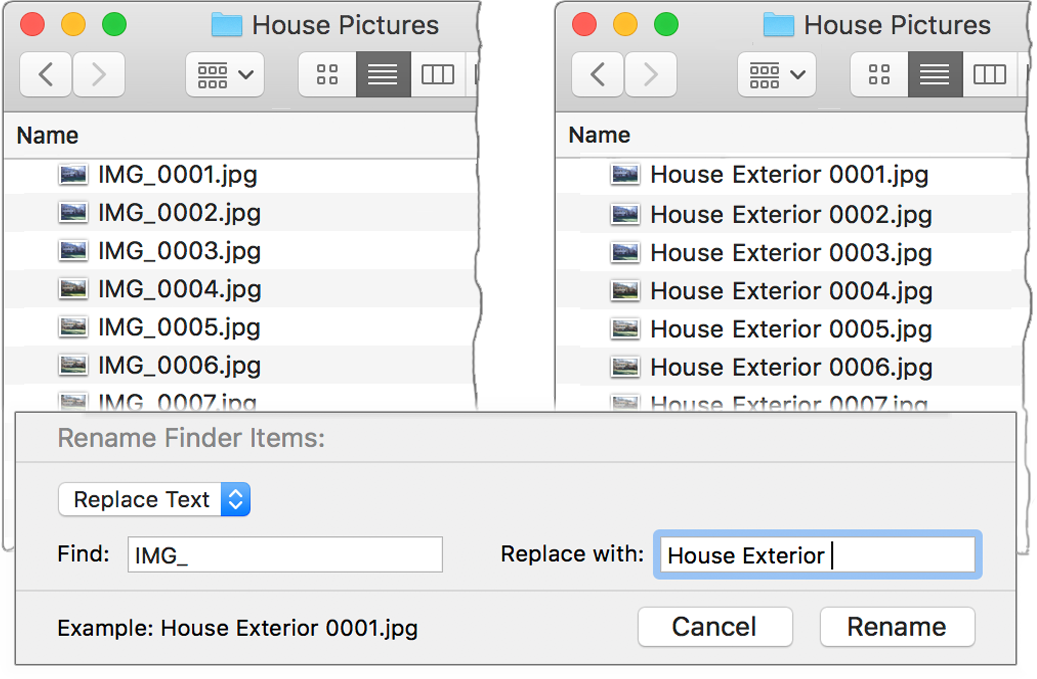

- #Quicken for mac renaming rules update
- #Quicken for mac renaming rules full
- #Quicken for mac renaming rules code
- #Quicken for mac renaming rules license
- #Quicken for mac renaming rules windows
I began my career in public accounting, and while I no longer provide accounting or auditing services to clients, I’ve held a CPA license here in the state of Washington for over thirty years.
#Quicken for mac renaming rules windows
If you’re a Quicken Windows version thinking about switching over to the Mac, this review should be useful. Unlike other written reviews of Quicken software, my recent experience is exclusive to the Mac platform, though I will make feature comparisons to the Windows version.
#Quicken for mac renaming rules update
In this post, I’ll share an update on how it’s gone using the latest version, Quicken 2020 for Mac. I wrote about the process of switching from Windows to Mac here.Īs I wrote then, I had very high expectations for the Mac version under new leadership, independent of Intuit, and the financial benefit of a new subscription-based business model. I have been using Quicken to manage my finances since 1989: first on the Mac, then a long stint on the Windows version, before switching back to the new-and-improved Mac version four years ago. You do need to have a CUSIP number for every security to create a proper QFX file that Quicken can import.Welcome to my third annual review of the personal finance software, Quicken for Mac. For the QFX (OFX) case, each transaction must be accompanied by the security record with CUSIP supplied. You need to make sure your securities names do match the ones on the QIF file, but nothing more.
#Quicken for mac renaming rules full
When you import a QIF file with investment transactions under Quicken (or MS Money), Quicken will look up the security by its full name. That’s it, no ticker symbol, no CUSIP numbers, just full Security name. QIF format simplifies investment transactions by limiting security identification to just the security name. It should be ok for most payees, but not retailer stores, like Walmart. There is a workaround (no great, but some) this limitation for categories: you can set “rename rules” in Quicken to have categories assigned to specific payee names. On the other hand, the QIF format still imports categories and tags just fine. QFX format as extended OFX format with additional Quicken only details, but the OFX specification does not provide category or tag attribute for transactions (or anything else similar) That’s it you cannot import categories and tags assigned to your transactions using the QFX (Web Connect) format. The cure for that is simple: edit account, click on the “Online Services” tab, and select “deactivate online link”. If you have other QFX files with different settings then your currently for the account in “online link”, Quicken will not allow you to import that other QFX file under the “occupied” account. Once a QFX file is imported under an account in Quicken you choose during the import, it “online links” that account to bank settings supplied in that QFX file. Some banks come and go, so your bank may drop QFX support tomorrow.
#Quicken for mac renaming rules code
Quicken checks if the bank code supplied in the QFX file is ‘allowed’ by Quicken for a specific bank and even more bank account type. Quicken does not do any “home calls” during QIF imports, but it does every time you are trying to import a QFX file (yes, you need the Internet connection, your firewall must allow Quicken to go through just to import a QFX file that you have locally on your computer). CSV2QIF - CSV/XLS/XLSX to QIF converter, Bank2QIF - CSV, XLS, XLSX, PDF, QFX, OFX, QBO, QIF, MT940, STA to QIF converter, The Transactions app, which converts from more formats and converts to more formats - will help you create those files.

They're slightly different, “Quicken only”, QIF files that Quicken 2012 imports just fine under any account. Guess what, unless you have Quicken Essentials for Mac, QIF files are fully supported, but not the ones your bank offers you for download. On the QIF import screen Quicken tells, then you can import a QIF file only under cash account, offering in the drop-down choice for account selection only cash accounts, but also “All Account” as well. Quicken claims that the QIF format is outdated, and not supported anymore, however, still allows importing a QIF file.

Here are the major differences between QIF and QFX (Web Connect) format when you try to import them under Quicken: Vendor Support Quicken for Windows up to the latest 2020 (and 2019, 2018) version, supports import for QIF and QFX (Web Connect) files.



 0 kommentar(er)
0 kommentar(er)
